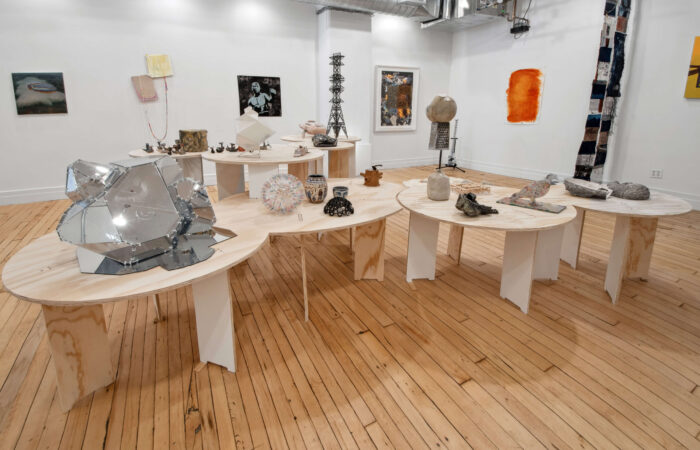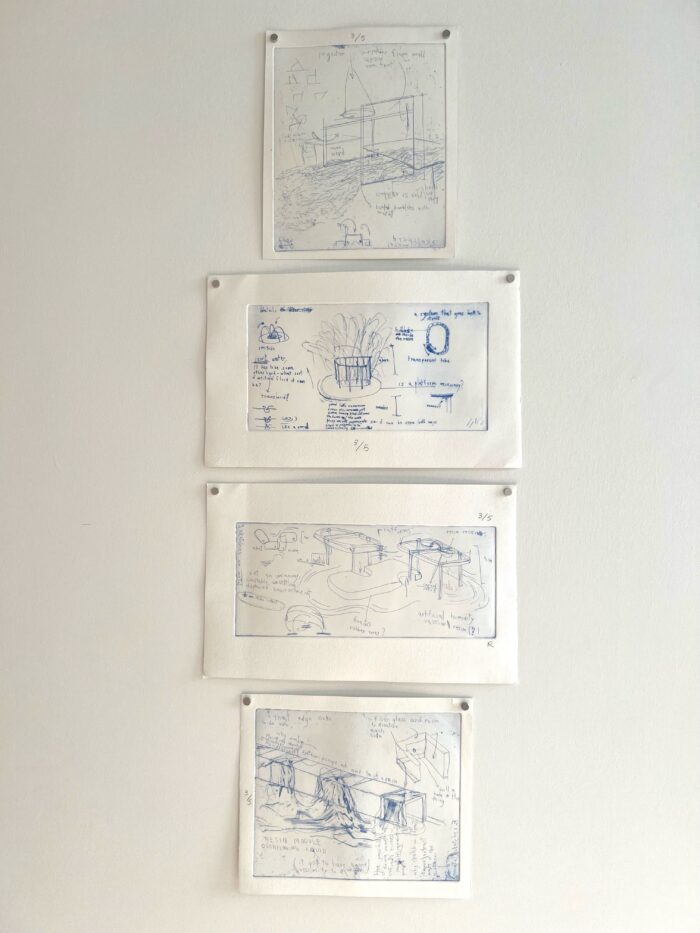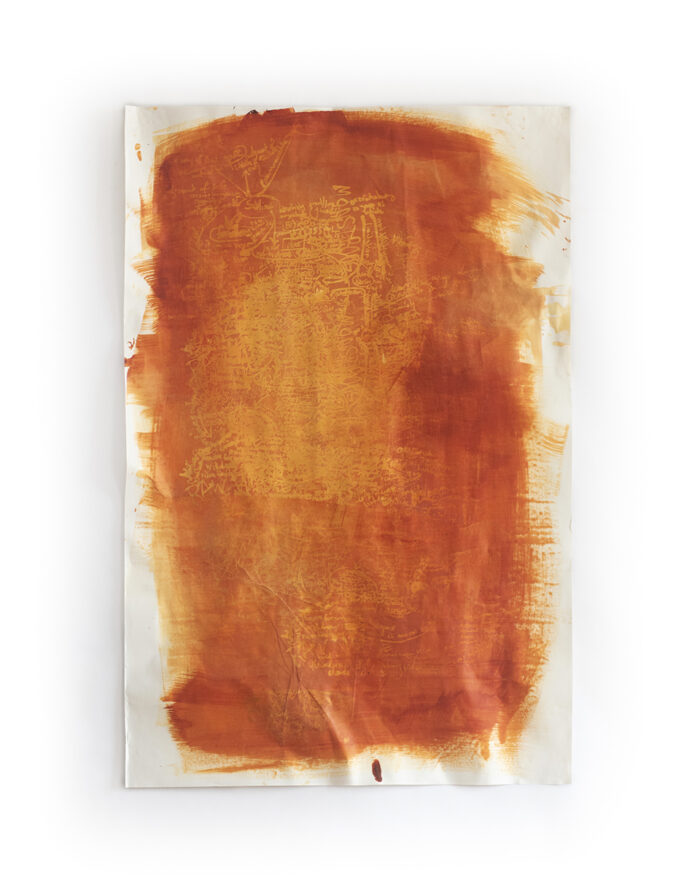
Prototype 1.0 at Springs Projects
curated by Tomas Vu
April 12 – May 20, 2024
It’s like seeing a world in a grain of sand. At Springs Projects, Prototype 1.0 is an ambitious exhibition featuring the work of more than 40 artists, ranging from globally renowned artists and architects like Kiki Smith and Buckminster Fuller to recent MFA graduates. Walking into the wood-toned room with art objects placed closely together is like entering a cabinet of curiosities as Alice in Wonderland. According to the show’s curator Tomas Vu, the exhibition examines the “initial spark” behind artistic projects and careers, examining the “relationship between object-hood and origin.”

The notion of prototypes hinges on conceptual evaluation, which is in flux with development and momentum. However, the exhibition is also interested in unpacking the nuanced distinction between prototypes and preliminary sketches or the often-romanticized idea of inspiration. Most works in this show convey a heightened awareness of conceptual synthesis and proliferation: “one of many to come.” Sarah Sze’s Notepad (2008) creates a self-contained world readable through architectural references: staircases and ladders spring into the three-dimensional space from sheets of paper, setting the stage for her later room-sized installations with objects found in a surreal, otherworldly state of suspension. Considering “prototypes” more literally, Luis Silva’s wood model, Untitled (2023), was a tad unconventional for a gallery setting, as the layering technique and modularity of recurring shapes are highly reminiscent of architectural presentations, especially those of landscape design. The work renders a celestial oasis where nature becomes unfamiliar and Boschian, and it even echoes the circular table-pedestals at the center of the gallery designed by the curator himself.

This interest in manufactured nature is not singular as a crucial point of departure for artists. Kiki Smith’s Birdie Bird (2023), for instance, is in line with her evocation of animal forms starting from the 1990s. According to the Whitney Museum, the bird symbol is convoluted with traditional associations with the Holy Spirit and an abstraction of the human condition—”mute, lifeless forms” with a “haunting sense of vulnerability.” Similarly, Hanneline Røgeberg’s Petroleum Soul Pile-up (2015) made from sheepskin and oil paint is reminiscent of how oil spills affect animals. The distinct petroleum pattern juxtaposed against the sheepskin’s representational innocence conveys a sense of quiet, sometimes invisible violence, which is still relevant in the artist’s recent works like her drawings and monotypes of surveillance stills in Double Blind (2023). These prototypes are highly relational and even visceral.


Prototypes are also about representation and formalization contingent upon unique, individualized artistic sensibilities. For instance, Amanda Millet-Sorza’s Untitled (2024) plays with medium-based transparencies. Nebulae of text and kinetic, gestural strokes form intricate layers that are further animated by alternating directionalities and a disorienting sense of density. The ceramic works—Face Cup (2023), King Bowl (2023), and Gopnik Cup (2023)—made by Hae Won Sohn and Stipan Tadić put a comic and lighthearted spin on pottery making. In Face Cup, while the depth and cast shadows of the human face is carefully rendered through hatching, this painterly effort is countered by the three-dimensional curve of the cup, making the face goofily distorted. Nicola López’s Power Tower (2013) heightens geometric beauty in the form of miniature, showcasing an interest in urban infrastructure as “evidence of human aspirations and failures.” This process of making facsimiles would later evolve into using exaggerated proportions and anthropomorphism to depict similar structures of human construction.

Encapsulating a diverse and engaging mix of mediums and motifs, Prototype 1.0’s through line is perhaps best summarized as the unrelenting intellectual curiosity of artists at work. An arena of art historical know-how and initial experimentation, the exhibition frames each work as a microcosm and point of departure for the artist’s evolving vision.
Exhibiting Artists:
Korakrit Arunanondchai | Natalie Birinyi | Nathan Catlin | Ernesto Caivano | Isami Ching | William Cordova | Alejandro Contreras | Predrag Dimitrijevic | Rafael Domenech | Delphine Fawundu | Megan Foster | Fab 5 Freddy |Buckminster Fuller | Baris Gokturk | Valerie Hammond | Cate Holt | Michael Joo | Julia Jalowiec | Sonia Kahn | Jon Kessler | Calvin Kim | Fred Liang | Charlene Liu | Nicola López | Raphaela Melsohn | Jeffrey Meris | Amanda Millet-Sorsa | Brian Novatny | Jennifer Nuss | Kambui Olujimi | Leah Piepgras | Lee Quiñones | Paul Rho | Hanneline Røgeberg | Lisa Sigal | Luis Silva | Kiki Smith | Jairo Sosa | Sarah Sze | Hae Won Sohn | Stipan Tadic | Leandro Vazquez I Beau Willimon | Wang Xu | Craig Zammiello
